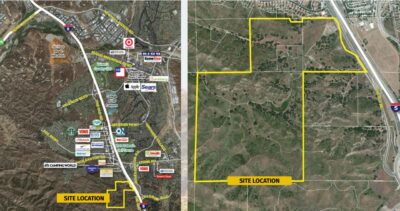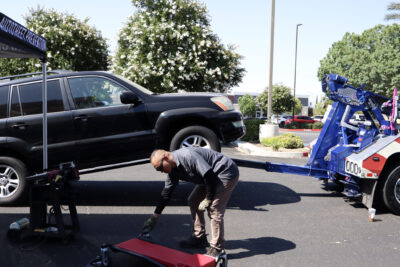
Los Angeles County is a sprawling urban landscape where more than 10 million residents navigate congested roads daily, many commuting long distances across cities such as Santa Clarita, Burbank, Pasadena, and Downtown LA. Each region presents its own set of driving hazards, from winding canyon roads to jam-packed freeways. For commuters, getting behind the wheel is no longer just about getting to work – it’s about survival, both on the road and in the courtroom. Rising accident rates are not only increasing risks to life and property but also triggering a wave of legal challenges that many drivers are ill-prepared to face.
As car crashes become more frequent, so does the demand for legal assistance. A Los Angeles car accident lawyer is now one of the most in-demand professionals in Southern California, offering critical support for victims trying to recover damages, deal with insurers, or defend themselves against claims. The geography of greater LA plays a key role in shaping these risks, and understanding the regional dynamics is crucial to staying safe and legally protected.
Santa Clarita’s Long Commute and the Canyon Curve Dilemma
Santa Clarita may offer scenic suburbs and quieter neighborhoods, but its distance from Los Angeles’s urban core forces residents into daily marathon commutes. The most common route – Interstate 5 – is notorious for high speeds and unpredictable congestion. But perhaps the most dangerous part of the drive involves the curved, hilly roads leading into and out of the Santa Clarita Valley. These winding paths become treacherous during poor weather or rush hour and have seen a notable rise in single-vehicle and head-on collisions.
Because Santa Clarita’s population continues to grow, more drivers than ever are facing these high-risk travel conditions. Many accident victims report not just physical injuries, but also financial and legal chaos as they struggle to prove fault or recover expenses in crashes where conditions, not recklessness, played a role. With long emergency response times and limited law enforcement presence in the more rural stretches, documentation can be weak, making a strong legal strategy essential for anyone involved in an incident along these routes.
Burbank’s Congested Corridors and Rear-End Collision Hotspots
Burbank is home to major media studios and regional airports, making it a high-traffic zone for both professionals and tourists. The city’s compact layout and frequent stop-and-go traffic have turned its surface streets into hotspots for rear-end collisions. The notorious Olive Avenue and Alameda Avenue corridors are particularly prone to fender benders during rush hour, often due to impatient drivers trying to beat traffic lights or distracted drivers focused on GPS navigation in unfamiliar neighborhoods.
These types of accidents might seem minor, but they frequently result in soft tissue injuries and significant disputes over liability. Because California operates under comparative negligence, even a driver who is rear-ended could share partial blame if brake lights were malfunctioning or if they made an abrupt stop. These nuances mean that even the most seemingly straightforward crash can become a contentious legal affair.
Pasadena’s Crosswalk Conflicts and the Pedestrian Safety Crisis
Pasadena has worked hard to cultivate a walkable urban identity with tree-lined boulevards, pedestrian plazas, and a bustling downtown. However, that walkability has come at a cost. The city has seen an increase in pedestrian-involved accidents, particularly at busy intersections along Colorado Boulevard and Lake Avenue. Confusion over right-of-way laws, hurried drivers, and jaywalking contribute to a growing number of incidents where cars strike individuals on foot.
Victims of pedestrian accidents in Pasadena face a unique set of legal hurdles. Injuries tend to be severe, meaning the stakes for compensation are higher. At the same time, drivers may argue that the pedestrian entered the roadway illegally or without warning. For both drivers and pedestrians, legal representation is essential in a city where crosswalk laws can be open to interpretation and where insurers are quick to minimize payouts for injuries sustained outside of vehicles.
Glendale’s Freeway Merges and Fender Bender Legal Drama
Glendale is where urban sprawl meets chaotic freeway interchanges, particularly where the 2, 5, and 134 freeways converge. This area is notorious for its confusing on-ramps and abrupt lane merges, leading to a high number of side-swipe and merge-related accidents. Drivers unfamiliar with the area or using navigation apps often make last-minute lane changes, increasing the likelihood of collisions during high-speed transitions.
These accidents often produce vehicle damage but not always visible injuries. That creates challenges when a victim later develops symptoms such as whiplash or back pain. Insurance companies are increasingly skeptical of delayed injury claims, especially when police reports note “no visible injuries at the scene.” In such cases, a Los Angeles car accident lawyer is vital to demonstrating the validity of those injuries and fighting back against insurer denial tactics. In Glendale’s congested traffic environment, even a simple crash can quickly evolve into a protracted legal standoff.
Hollywood’s Rideshare Mayhem and Tourist Confusion
Hollywood is a magnet for both tourists and rideshare drivers. The convergence of distracted sightseers, tight street layouts, and impatient Uber and Lyft vehicles results in near-constant risk of collision. Hollywood Boulevard and Highland Avenue are infamous for double-parking rideshares, last-minute U-turns, and aggressive pickups and drop-offs in non-designated areas.
When an accident involves a rideshare vehicle, the legal situation becomes even more complex. Liability depends on whether the driver was logged into the app, in the middle of a fare, or operating independently at the time of the crash. Furthermore, victims can sometimes file claims against both the driver’s personal policy and the rideshare company’s commercial insurance – if they know how. Navigating these overlapping coverage layers without legal help is nearly impossible.
Downtown LA’s High-Stakes Collisions and Commercial Liability Cases
Downtown Los Angeles is the epicenter of the region’s business activity, and it shows in the traffic. The narrow streets are constantly filled with commercial delivery vans, buses, cyclists, and pedestrians, making for a volatile mix. Crashes here often involve commercial vehicles, and when they do, the legal implications are far greater. Companies are frequently held liable for the actions of their drivers, especially if poor training, vehicle maintenance issues, or unrealistic delivery expectations contributed to the accident.
Unlike standard personal injury claims, commercial vehicle accidents can involve multiple defendants, from the driver to their employer and even third-party contractors responsible for vehicle upkeep. These cases require a higher degree of legal expertise, often involving subpoenas, deposition hearings, and intensive discovery processes. A standard insurance claim won’t cut it. Victims of Downtown LA crashes need a legal team capable of taking on well-resourced corporate entities – and they need it fast.
The I-405 Corridor: Where Speed Meets Saturation
The I-405, stretching from the San Fernando Valley through West LA to Long Beach, is among the most congested freeways in the country. With over 370,000 vehicles using it daily, the corridor is a dangerous blend of long-haul truckers, commuters, and out-of-town drivers. The high-speed nature of the 405, combined with frequent stop-and-go traffic and road work zones, results in numerous multi-car pileups and rear-end crashes.
Because many of these accidents occur at high speeds, injuries are often severe and involve multiple parties. Determining fault in a multi-vehicle chain reaction is legally complicated. Which driver started the chain? Was one tailgating or distracted? What role did road conditions play? Victims are often left fighting multiple insurance companies and facing conflicting police reports. In these scenarios, expert legal representation is not a luxury – it’s a lifeline.
DISCLAIMER: No part of the article was written by The Signal editorial staff






